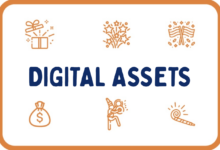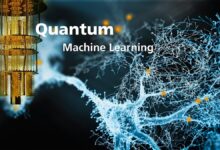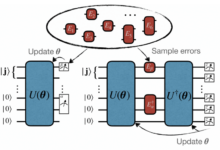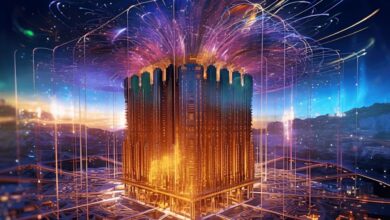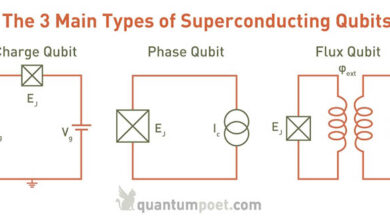AI-powered Content Creation A Comprehensive Guide
AI-powered content creation is rapidly transforming how we produce text, images, and other media. This guide explores the core principles, benefits, limitations, and ethical considerations of this burgeoning field, examining its applications across various industries and offering practical advice for implementation. We will delve into the diverse AI tools available, compare AI-driven methods to traditional approaches, and analyze real-world case studies showcasing successful AI content creation initiatives.
From marketing campaigns to journalistic reports, AI is reshaping the landscape of content generation. We will investigate the impact on human jobs, address potential biases, and explore future trends, providing a balanced perspective on this transformative technology. Ultimately, this guide aims to equip readers with the knowledge and understanding necessary to navigate the evolving world of AI-powered content.
Defining AI-Powered Content Creation
AI-powered content creation leverages artificial intelligence algorithms to generate various forms of content, automating tasks previously handled solely by humans. This technology offers significant potential for increasing efficiency and productivity in content production across diverse industries. It’s rapidly evolving, presenting both opportunities and challenges for content creators and businesses alike.AI-powered content creation relies on several core principles. Firstly, it utilizes vast datasets of existing text and code to learn patterns, styles, and structures.
This learning process, often involving deep learning models, enables the AI to generate text that mimics human writing. Secondly, the process involves sophisticated algorithms that can understand and respond to prompts, generating content tailored to specific requirements. Finally, the output is often refined through human review and editing, ensuring accuracy, quality, and alignment with brand voice and style guidelines.
Types of AI Tools Used in Content Generation
Several types of AI tools contribute to the content creation process. Natural Language Processing (NLP) models are fundamental, enabling the AI to understand, interpret, and generate human language. Machine learning algorithms, specifically deep learning models like recurrent neural networks (RNNs) and transformers, are crucial for learning patterns and generating coherent text. Other tools include text summarization engines, which condense lengthy texts into concise summaries, and sentiment analysis tools, which determine the emotional tone of text.
Furthermore, AI tools are increasingly being integrated with other technologies, such as image and video generation AI, to create multimedia content.
Examples of AI-Generated Content Formats
AI is capable of generating a wide array of content formats. Blog posts and articles are frequently created using AI, offering a streamlined approach to producing informative and engaging written content. Social media posts, including captions and tweets, can be generated to maintain a consistent online presence. Marketing copy, including website content and product descriptions, is another area where AI excels, creating persuasive and compelling text for various marketing campaigns.
Creative writing, such as poems and short stories, while still in its developmental stages, demonstrates the growing potential of AI in generating imaginative text formats. Scriptwriting for videos and podcasts is another emerging application, helping to streamline the production of video and audio content.
Comparison of Traditional and AI-Driven Content Creation
| Feature | Traditional Content Creation | AI-Driven Content Creation |
|---|---|---|
| Speed | Relatively slow, depending on writer’s speed and complexity | Potentially much faster, depending on AI model and task complexity |
| Cost | Can be expensive, especially for skilled writers | Can be more cost-effective, especially for high-volume content |
| Scalability | Limited by human capacity | Highly scalable, able to generate large volumes of content |
| Creativity | Generally considered more creative and nuanced | Increasingly creative, but still often requires human oversight |
Benefits and Limitations of AI Content Creation
AI-powered content creation tools are rapidly transforming how businesses and individuals produce written materials. These tools offer a compelling blend of speed, efficiency, and scalability, but also present unique challenges that require careful consideration. Understanding both the advantages and limitations is crucial for effective implementation.
Advantages of AI Content Creation
AI significantly accelerates the content creation process. Tasks that previously required hours of human effort, such as generating basic website copy, social media posts, or product descriptions, can now be completed in minutes. This increased speed allows businesses to publish more frequently, boosting their online presence and engagement. Furthermore, AI can handle large volumes of content generation simultaneously, making it ideal for scaling content marketing efforts across multiple platforms and languages.
The consistent application of style guides and brand voice is also enhanced, ensuring uniformity across all content pieces. Finally, AI can analyze vast datasets to identify trending topics and s, optimizing content for search engines and maximizing its reach.
Drawbacks and Challenges of AI Content Creation
While AI offers substantial benefits, it’s crucial to acknowledge its limitations. One major drawback is the potential for generating low-quality, unoriginal, or even factually incorrect content. AI algorithms learn from existing data, and if that data contains biases or inaccuracies, the generated content will reflect those flaws. Furthermore, AI lacks the nuanced understanding of human emotion, context, and creativity that is often essential for producing truly engaging and impactful content.
The reliance on AI can also lead to a lack of human oversight, potentially resulting in content that is tone-deaf, insensitive, or fails to connect with the target audience on an emotional level. Finally, ethical considerations surrounding plagiarism and copyright infringement must be carefully addressed when using AI for content generation. Over-reliance on AI can also stifle human creativity and critical thinking.
AI-powered content creation is rapidly evolving, leveraging sophisticated algorithms to generate various text formats. A key component driving this advancement is the use of powerful Deep learning models , which enable the creation of highly nuanced and contextually relevant content. These models are continuously refined, leading to increasingly sophisticated and effective AI content generation tools.
Successful AI Content Creation Initiatives
Several companies have successfully integrated AI into their content strategies. For example, some news organizations use AI to generate basic news reports on routine events, freeing up human journalists to focus on more in-depth investigative pieces. E-commerce businesses leverage AI to create product descriptions and marketing materials at scale, significantly reducing their content creation costs. Furthermore, many marketing agencies use AI-powered tools to optimize their content for search engines and social media platforms, improving their clients’ online visibility.
These successful examples highlight the potential of AI to augment, rather than replace, human creativity and expertise in content creation.
Decision-Making Flowchart for Choosing Between AI and Human Content Creation
The decision of whether to use AI or human content creation depends on several factors. A flowchart can visually represent this decision-making process. Start:
-> Content Type
Simple, repetitive content (e.g., product descriptions)? Yes –> Use AI: (AI is efficient and cost-effective). No –> Content Complexity: High complexity, requiring nuanced understanding and creativity (e.g., long-form articles, creative writing)? Yes –> Use Human: (Human creativity and critical thinking are essential). No –> Budget: Limited budget?
Yes –> Use AI: (AI is a cost-effective solution). No –> Use Human: (Higher quality content is prioritized). End:
Applications Across Industries: AI-powered Content Creation
AI-powered content creation is rapidly transforming various sectors, impacting efficiency, productivity, and the overall quality of content produced. Its adaptability allows for bespoke solutions across diverse industries, each benefiting from AI’s unique capabilities in different ways. The following sections will explore key applications and their transformative effects.
AI’s Impact on Marketing Content Creation
AI is revolutionizing marketing by automating various content creation tasks, leading to increased efficiency and improved targeting. For example, AI tools can generate personalized email campaigns based on customer data, creating highly targeted messages that resonate with individual preferences. Beyond email, AI can assist in generating ad copy, social media posts, and blog content, optimizing for different platforms and audiences.
Sophisticated AI systems can analyze vast datasets of customer behavior to predict trends and tailor content accordingly, maximizing engagement and conversion rates. This allows marketing teams to focus on higher-level strategic planning and creative direction, rather than being bogged down in repetitive tasks. For instance, an AI tool might analyze a company’s existing blog posts and customer interactions to suggest relevant s and topics for future content, ensuring alignment with audience interests and search engine optimization () best practices.
AI in E-commerce Content Creation
In e-commerce, AI plays a crucial role in enhancing product descriptions, generating personalized recommendations, and creating engaging marketing materials. AI-powered tools can analyze product features and customer reviews to automatically generate compelling product descriptions, highlighting key benefits and addressing potential concerns. Furthermore, AI algorithms analyze purchasing history and browsing behavior to suggest relevant products to individual customers, increasing sales and customer satisfaction.
AI can also generate targeted advertising campaigns for specific products, optimizing ad copy and imagery for maximum impact across various online platforms. Consider a clothing retailer using AI to generate personalized product recommendations based on a customer’s past purchases and browsing history, leading to a more engaging and efficient shopping experience. The AI could even generate unique product descriptions tailored to specific customer segments, further improving conversion rates.
AI in News and Journalism versus Creative Writing
The application of AI in content creation differs significantly between news and journalism and creative writing. In news and journalism, AI is primarily used for automating tasks like summarizing news articles, translating content, and identifying potential biases in reporting. AI tools can quickly process large volumes of data to identify key events and trends, enabling journalists to focus on investigative reporting and in-depth analysis.
However, the use of AI in creative writing is more nuanced. While AI can generate text that mimics different writing styles, it struggles with the emotional depth, originality, and nuanced storytelling that characterize truly creative writing. AI can be a helpful tool for brainstorming ideas or overcoming writer’s block, but it is unlikely to replace the human element in crafting compelling narratives.
A journalist might use AI to quickly summarize multiple news reports on a breaking story, allowing them to provide a concise overview to their audience while still conducting their own in-depth reporting. In contrast, a novelist might use AI to generate different plot possibilities, but the ultimate narrative structure, character development, and emotional resonance will still rely on the author’s creative vision and human touch.
Ethical Considerations and Future Trends
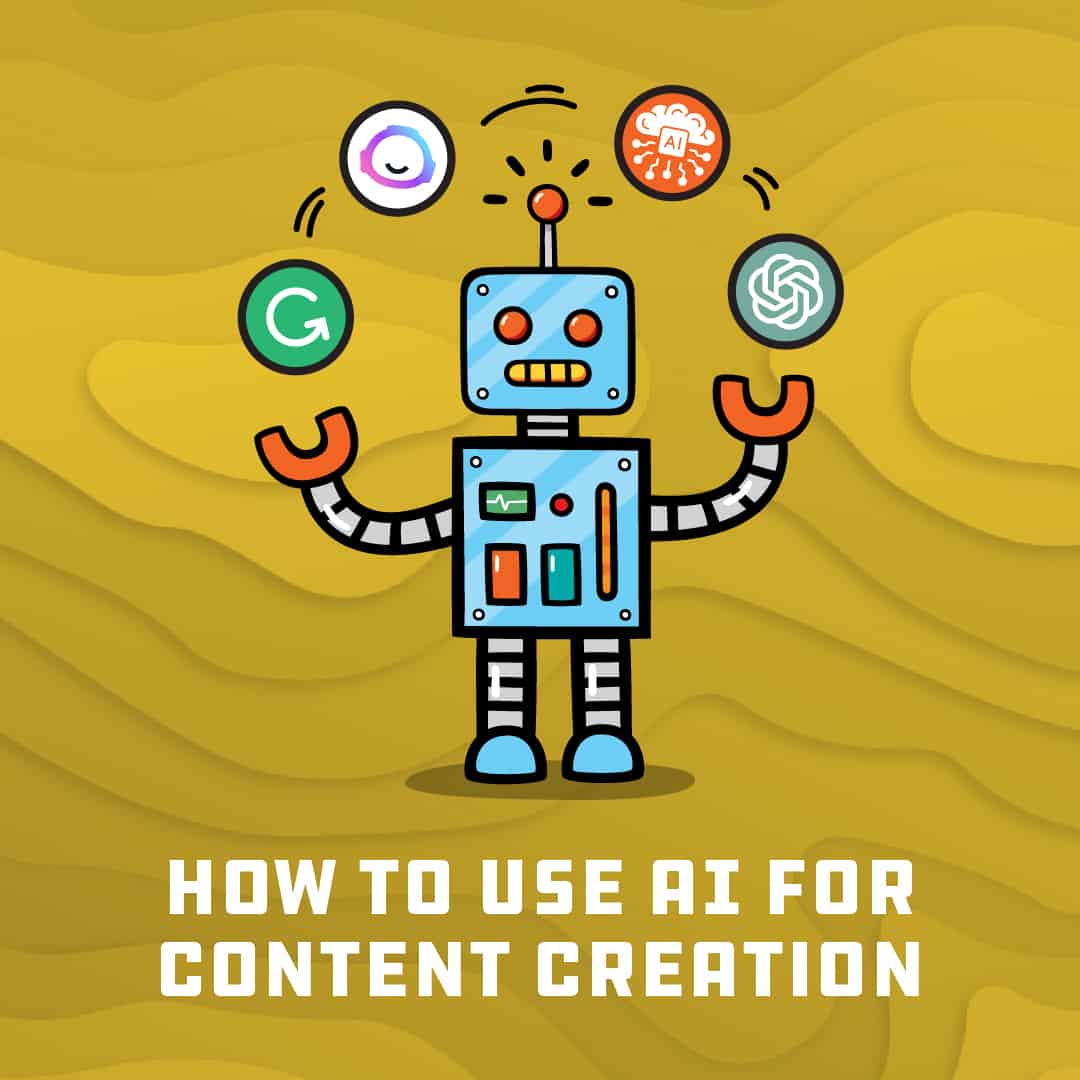
Source: seventhscout.com
The rapid advancement of AI-powered content creation presents a complex landscape of ethical dilemmas and exciting possibilities. Understanding the potential pitfalls and proactively addressing them is crucial for responsible innovation and widespread adoption of this technology. This section will explore the ethical implications, the impact on human employment, and predictions for the future of AI in content generation.AI’s increasing sophistication raises several ethical concerns.
The ease with which AI can generate large volumes of text opens the door to plagiarism, either unintentional through mimicking existing styles or deliberate through direct copying. Furthermore, biases embedded within the training data can easily manifest in the AI’s output, perpetuating harmful stereotypes and discriminatory viewpoints in the generated content. The lack of transparency in how some AI models function further complicates the issue, making it difficult to identify and rectify these biases.
This necessitates a thoughtful approach to mitigating these risks and ensuring responsible development and deployment of AI content creation tools.
AI-powered content creation is rapidly evolving, offering innovative solutions for various writing needs. This progress is significantly aided by advancements in related technologies, such as the sophisticated capabilities of AI chatbots and virtual assistants , which are increasingly used for tasks like data gathering and initial draft generation. Ultimately, these advancements contribute to more efficient and effective AI-powered content creation workflows.
AI’s Impact on Human Employment in Content Creation
The automation potential of AI in content creation naturally raises concerns about job displacement among human writers, editors, and other content professionals. While AI can automate certain tasks, such as generating basic product descriptions or social media posts, it is unlikely to completely replace human creativity and critical thinking. Instead, the integration of AI is more likely to shift the roles and responsibilities of content creators.
Human professionals will likely focus on higher-level tasks such as strategic planning, creative direction, and quality control, while AI handles more repetitive and time-consuming aspects of the content creation process. This shift requires a proactive approach to workforce adaptation and reskilling initiatives to ensure a smooth transition and minimize potential negative impacts on employment. For example, journalists might leverage AI for initial research and fact-checking, freeing them to focus on in-depth analysis and investigative reporting.
Predictions for the Future of AI in Content Creation, AI-powered content creation
Technological advancements will continue to shape the future of AI in content creation. We can anticipate improvements in natural language processing (NLP) leading to more nuanced and contextually aware AI-generated content. The development of more sophisticated AI models capable of understanding and responding to complex prompts will also be a significant advancement. Furthermore, the integration of AI with other technologies, such as virtual reality (VR) and augmented reality (AR), will open up new possibilities for immersive and interactive content experiences.
AI-powered content creation is rapidly evolving, offering exciting new possibilities for efficiency and scalability. Understanding the underlying mechanisms of these systems, however, is crucial; for instance, consider the energy consumption differences between different blockchain consensus mechanisms, such as the debate around Proof of stake vs proof of work. This knowledge informs responsible development and deployment of AI tools for content creation, ensuring sustainable and ethical practices.
For instance, we might see AI generating personalized narratives for interactive storytelling experiences or creating dynamic, adaptable content for VR training simulations.
Potential Solutions to Address Ethical Concerns
Addressing the ethical concerns surrounding AI-generated content requires a multi-faceted approach. The following measures can help mitigate risks and promote responsible AI development:
- Developing robust detection mechanisms to identify AI-generated content and prevent plagiarism.
- Implementing rigorous bias detection and mitigation techniques during the training and deployment phases of AI models.
- Promoting transparency and explainability in AI algorithms to ensure accountability and understanding of the decision-making process.
- Establishing clear ethical guidelines and regulations for the development and use of AI in content creation.
- Investing in education and training programs to equip content creators with the skills needed to work effectively alongside AI tools.
Practical Implementation and Best Practices
Successfully integrating AI tools into your content creation workflow requires a strategic approach. This involves careful selection of tools, effective training, and a focus on leveraging AI to augment, not replace, human creativity. Understanding the strengths and limitations of different AI tools is crucial for optimizing their use and achieving high-quality results.Implementing AI tools for content creation involves a phased approach.
AI-powered content creation is rapidly evolving, demanding significant computational resources. The scalability of these systems is crucial for handling the increasing volume of requests, and this is where efficient infrastructure comes into play; solutions like Layer 2 scaling solutions offer a pathway to manage this growth. Ultimately, these improvements in infrastructure directly benefit AI-powered content creation by ensuring faster processing and improved user experience.
First, identify specific content needs and choose AI tools that align with those needs. Consider factors like the type of content (blog posts, social media updates, marketing copy, etc.), desired tone and style, and budget. Next, thoroughly train the AI model on your brand voice and style guide. This ensures consistency in the generated content. Finally, establish a workflow that integrates AI tools seamlessly into your existing content creation process, allowing for human review and editing.
Continuous monitoring and adjustment are key to optimizing performance.
AI Tool Selection and Integration
Selecting the right AI tool is paramount. Consider factors such as the tool’s capabilities, ease of use, integration with existing workflows, and cost. For example, tools specializing in optimization might be chosen for blog posts, while those focused on short-form content generation could be used for social media. Integration involves connecting the AI tool with other platforms you use, such as content management systems or social media schedulers, to streamline the content creation and publishing process.
This seamless integration improves efficiency and reduces manual effort.
Best Practices for Enhancing Human Creativity
AI should be viewed as a powerful collaborator, not a replacement for human creativity. Best practices involve using AI to automate repetitive tasks such as research, headline generation, and initial draft creation, freeing up human writers to focus on higher-level tasks like strategic planning, creative storytelling, and critical review. Human oversight is crucial to ensure the AI-generated content aligns with the brand’s voice, values, and overall messaging.
The human element adds the crucial nuance, emotional intelligence, and ethical considerations that AI often lacks.
Evaluating the Quality of AI-Generated Content
Evaluating AI-generated content requires a multi-faceted approach. First, assess the accuracy and factual correctness of the information presented. Next, examine the clarity, coherence, and overall readability of the text. Then, consider the content’s engagement and originality; does it capture the reader’s attention and offer a unique perspective? Finally, review the content’s adherence to the brand’s voice and style guide.
Using a combination of automated tools and human review helps ensure comprehensive evaluation.
Optimizing AI-Generated Content for Different Platforms
Optimizing AI-generated content for different platforms requires tailoring the content’s length, style, and format to suit each platform’s specific audience and user experience. For example, content for Twitter needs to be concise and engaging, whereas content for LinkedIn requires a more professional and informative tone. The use of relevant hashtags and s further enhances the visibility and reach of the content on each platform.
Understanding platform-specific algorithms and best practices is critical for maximizing content effectiveness. Consider A/B testing different versions of AI-generated content to identify what performs best on each platform.
Illustrative Examples of AI-Generated Content
AI is rapidly transforming content creation across various industries, offering both exciting possibilities and new challenges. This section will illustrate the diverse applications of AI in content generation, showcasing its capabilities through fictional scenarios and detailed descriptions of AI-generated images. We’ll explore how AI can produce different content formats and highlight the potential impact on various sectors.
AI Content Creation in the Fashion Industry
Imagine a small, independent fashion designer struggling to keep up with the demands of social media marketing and e-commerce product descriptions. This designer uses an AI content creation tool. The AI analyzes the designer’s clothing line, identifying key features, styles, and target audiences. Based on this analysis, the AI generates engaging social media posts highlighting unique design elements, compelling blog posts detailing the inspiration behind the collections, and concise yet descriptive product descriptions optimized for online sales.
The AI also creates targeted advertising copy for different platforms, ensuring consistent brand messaging and maximizing reach. The designer, freed from the time-consuming task of content creation, can focus on designing and producing new collections.
Examples of AI-Generated Content Formats
AI can produce a wide range of content formats. For instance, a blog post about sustainable fashion might be generated, incorporating relevant s and a conversational tone to engage readers. Simultaneously, short, punchy social media updates can be created to promote the blog post and highlight specific garments. Finally, marketing copy, designed to drive sales, could focus on the unique selling points of each item, highlighting its craftsmanship and ethical production methods.
The versatility of AI in this context allows for a comprehensive and integrated marketing strategy.
Examples of AI-Generated Images
The following are descriptions of three distinct AI-generated images, showcasing the diversity of styles and applications possible:
- Image 1: A futuristic cityscape. This image employs a hyperrealistic style, featuring towering skyscrapers made of sleek, reflective materials. Flying vehicles zip between buildings, and holographic advertisements shimmer in the air. The composition is dynamic, with diagonal lines and a strong sense of depth, creating a feeling of bustling energy and technological advancement. The color palette is predominantly cool, with blues, purples, and silvers dominating, further emphasizing the futuristic setting.
- Image 2: An Impressionistic portrait of a woman. This image uses a painterly style reminiscent of Impressionist masters, with visible brushstrokes and a focus on capturing the essence of light and color. The subject, a woman with flowing hair, is rendered in soft, blended colors, and the background is blurred and suggestive rather than detailed. The composition is centered on the woman’s face, drawing the viewer’s eye to her expressive features.
The overall effect is one of serene beauty and emotional depth.
- Image 3: A whimsical illustration of a forest creature. This image is rendered in a cartoonish style, with bold Artikels and bright, saturated colors. The creature, a small, furry animal with large eyes and colorful wings, is depicted in a playful pose amidst a vibrant, fantastical forest. The composition is carefully balanced, with the creature positioned centrally and surrounded by detailed foliage. The overall mood is lighthearted and imaginative, appealing to a younger audience.
Final Thoughts
AI-powered content creation presents both immense opportunities and significant challenges. While offering unprecedented efficiency and scalability, it necessitates careful consideration of ethical implications and potential biases. By understanding the strengths and limitations of AI tools, and by prioritizing human oversight and creativity, we can harness the power of AI to enhance content creation without compromising quality, originality, or ethical standards.
The future of content creation lies in a collaborative approach, where human ingenuity and artificial intelligence work in synergy to produce engaging and impactful content for a diverse range of audiences and applications.
FAQ Overview
What are the common types of AI content creation tools?
Common types include natural language generation (NLG) tools for text, image generators like DALL-E 2 and Midjourney, and video generation tools.
How much does AI content creation cost?
Costs vary widely depending on the tool, usage level, and features. Some offer free tiers while others require subscriptions or pay-per-use models.
Can AI replace human writers entirely?
Currently, no. While AI excels at generating certain types of content, human creativity, critical thinking, and nuanced understanding remain essential for high-quality, original work.
How can I ensure the accuracy of AI-generated content?
Always fact-check AI-generated content thoroughly. Use AI as a tool to assist, not replace, human review and editing.
What are the legal implications of using AI-generated content?
Legal issues surrounding copyright, ownership, and potential plagiarism need careful consideration. Consult legal counsel for specific guidance.
